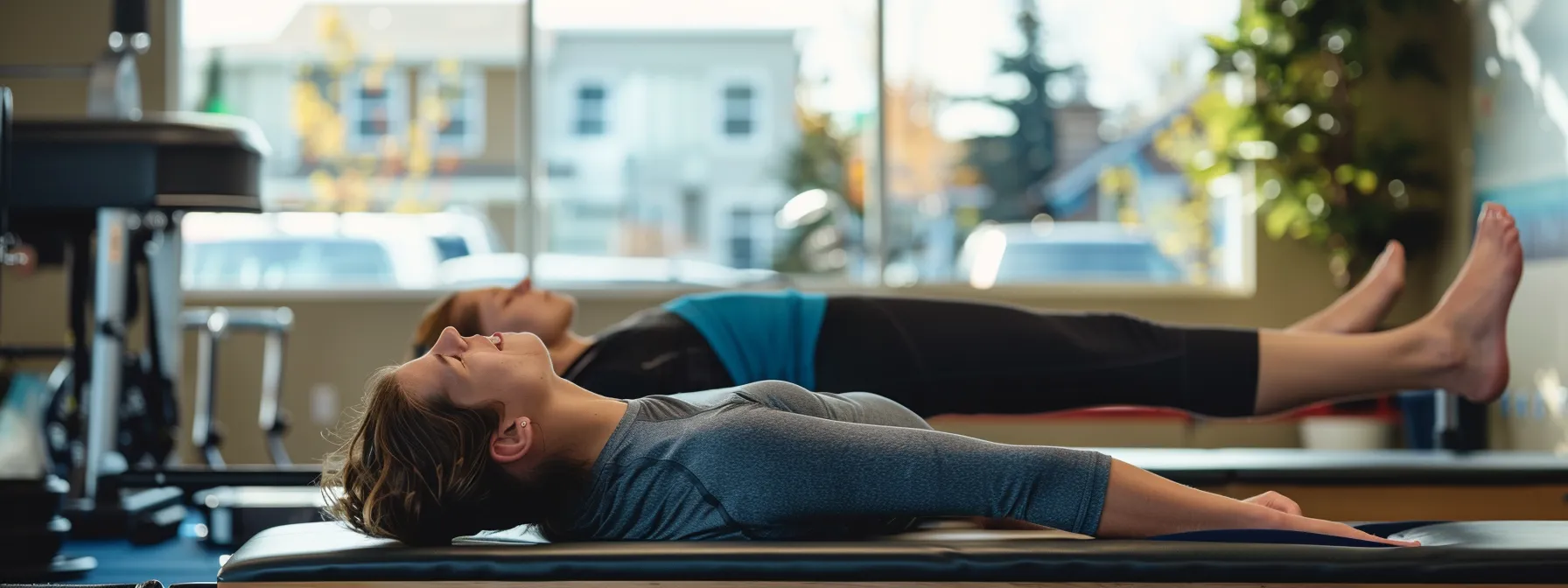Many people underestimate the impact of good posture on their daily lives. Poor posture can lead to discomfort, pain, and even decreased quality of life. This guide will explore how Cochrane chiropractors assess posture and recommend targeted exercises to improve it. Readers will learn about the benefits of chiropractic services, including manual therapy and joint adjustments, to enhance their overall well-being. By addressing common posture-related issues, this content aims to provide practical solutions for those seeking to feel better and live more actively.
The Importance of Good Posture in Daily Life

Good posture plays a crucial role in overall health and well-being. It affects the alignment of the spine, including the curvature of the thoracic vertebrae, and can influence the tension in fascia and ligaments. Poor posture can lead to discomfort, dizziness, and other health issues. Understanding common causes of poor posture is essential for developing effective strategies such as chiropractic services to improve it.
This section will explore how posture impacts health, identify common causes of poor posture, and provide practical insights for enhancing posture through targeted exercises.
How Posture Affects Health and Well-Being
Good posture significantly impacts overall health and well-being by influencing muscle tone and spinal alignment. Research indicates a statistical significance between poor posture and various health issues, including discomfort and reduced mobility. A physical examination often reveals that individuals with poor posture may be at a higher risk factor for developing chronic pain, which can affect daily activities and quality of life. By addressing posture through targeted exercises, individuals can enhance their physical health and reduce the likelihood of these complications.
Common Causes of Poor Posture
Common causes of poor posture often stem from lifestyle choices and daily habits. Many individuals spend extended periods in a prone position, such as sitting at desks or using mobile devices, which can lead to misalignment of the spine. Research from the Cochrane Library highlights that physical medicine and rehabilitation strategies can effectively address these postural issues, reducing the risk of related pathologies and enhancing overall well-being.
Introduction to Cochrane Chiropractors’ Approach

Introduction to Cochrane Chiropractors’ Approach
Cochrane chiropractors emphasize a philosophy centered on targeted exercises to treatposture-related issues. Their approach is supported by systematic reviews that highlight the benefits of chiropractic care in improving posture and reducing the risk of disease. The following sections will explore specific exercises and treatment strategies that enhance motion and overall well-being.
Philosophy Behind Targeted Exercises
The philosophy behind targeted exercises in Cochrane chiropractors’ approach focuses on addressing the root causes of poor posture through evidence-based practices. Randomized controlled trials and clinical trials have shown that specific exercises can significantly reduce inflammation and improve spinal alignment, leading to better overall health. Clinicians often incorporate techniques such as heat therapy alongside these exercises to enhance muscle relaxation and promote recovery, ensuring that patients can achieve optimal posture and reduce discomfort effectively.
Benefits of Chiropractic Care in Posture Improvement
Chiropractic care offers significant benefits for posture improvement by addressing the alignment of the spine and enhancing the function of muscles, including the sternocleidomastoid muscle. Health professionals utilize targeted exercises to improve proprioception, which is the body’s ability to sense its position in space, thereby positively influencing posture. Research indicates a strong correlation between proper spinal alignment and overall health, demonstrating that effective chiropractic interventions can lead to better posture and reduced discomfort.
Assessing Your Posture With a Cochrane Chiropractor

The assessment of posture with a Cochrane chiropractor begins with an initial consultation and evaluation process. This step is crucial for identifying specific postural imbalances that may contribute to issues such as headaches or injuries. By examining the alignment of the cervical vertebrae and other key areas, chiropractors can develop tailored strategies to enhance posture, including targeted exercises that support activities like swimming.
Informed consent is an essential part of this process, ensuring that patients understand the evaluation and treatment plan. The following sections will delve into the specifics of identifying postural imbalances and the targeted exercises that can lead to improved posture and overall well-being.
Initial Consultation and Evaluation Process
During the initial consultation and evaluation process with a Cochrane chiropractor, a thorough assessment of posture is conducted to identify any imbalances that may contribute to discomfort or injuries, such as sprains. The chiropractor examines the alignment of the spinal cord and evaluates how the body copes with various forces while in both standing and supine positions. This comprehensive evaluation allows for the development of a personalized treatment plan that includes targeted exercises aimed at improving posture and enhancing overall well-being.
Identifying Specific Postural Imbalances
Identifying specific postural imbalances is essential for effective treatment and relief from discomfort. A Cochrane chiropractor evaluates the alignment of the scapula and lumbar vertebrae to pinpoint areas of concern that may increase the risk of repetitive strain injury. By understanding these imbalances, chiropractors can develop targeted exercise plans that address the root causes of poor posture, ultimately enhancing overall well-being and reducing the likelihood of future injuries.
Targeted Exercises Recommended by Cochrane Chiropractors

Targeted Exercises Recommended by Cochrane Chiropractors
Cochrane chiropractors recommend a variety of targeted exercises to enhance posture and overall well-being. Strengthening exercises for core stability focus on building muscle support around the spine, improving biomechanics and reducing the risk of conditions like radiculopathy. Stretching techniques for muscleflexibility help alleviate tension, while alignment exercises aim to correct posture by addressing facet joint alignment and promoting a positive body image.
Strengthening Exercises for Core Stability
Strengthening exercises for core stability are essential for enhancing posture and overall function. Evidence from primary care practices indicates that a strong core can significantly reduce stiffness and discomfort in the spine, leading to improved alignment. Incorporating exercises such as planks and bridges not only supports spinal health but also helps in preventing injuries, as confirmed by medical imaging studies that show better outcomes in individuals with strong core muscles.
Stretching Techniques for MuscleFlexibility
Stretching techniques for muscleflexibility are vital components of pain management strategies recommended by Cochrane chiropractors. These techniques help alleviate muscle spasms and improve overall mobility, which is essential for maintaining good posture. Through patient education, chiropractors emphasize the importance of regular stretching to counteract the prevalence of tight muscles that can lead to discomfort and misalignment, ultimately enhancing the effectiveness of targeted exercises.
Alignment Exercises to Correct Posture
Alignment exercises are essential for correcting posture and enhancing overall spinal health. These exercises often incorporate elements of strength training to build the muscles that support proper alignment, while also integrating principles of nutrition to promote overall wellness. By utilizing spinal manipulative therapy, Cochrane chiropractors can assess individual needs through a detailed questionnaire, allowing for a tailored approach that addresses specific postural concerns and supports the principles of alternative medicine.
Incorporating Exercises Into Your Daily Routine

Incorporating targeted exercises into daily routines is essential for enhancing posture and overall well-being. This section will provide tips for consistency and effective practice, ensuring that individuals can integrate these exercises seamlessly into their lives. Additionally, adjustments for home and workplace environments will be discussed, focusing on how to manage subluxation and improve soft tissue health through kinesiology and appropriate weight management.
Tips for Consistency and Effective Practice
To ensure consistency and effective practice of targeted exercises, individuals should establish a routine that integrates these movements into their daily lives. Setting specific times for exercises can help create a habit, reducing the risk of strain and referred pain associated with poor posture. Additionally, seeking guidance from a Cochrane chiropractor during the diagnosis phase can provide tailored recommendations that align with primary health care strategies, enhancing the overall effectiveness of the treatment group’s approach to improving posture.
Adjustments for Home and Workplace Environments
Adjusting home and workplace environments is essential for promoting good posture and overall well-being. Simple changes, such as using ergonomic furniture and ensuring proper screen height, can significantly reduce strain on the spine. Incorporating tools like a visual analogue scale to assess discomfort levels can help individuals monitor their posture and make necessary adjustments, while techniques such as electrotherapy can provide relief from muscle tension. Additionally, integrating stress management practices into daily routines can further enhance posture by reducing the physical effects of stress on the body, ultimately leading to a healthier lifestyle.
Success Stories From Cochrane Chiropractor Patients

Patients of Cochrane chiropractors have successfully overcome chronic back pain through targeted exercises, demonstrating the effectiveness of applied kinesiology in enhancing posture. Improved posture not only alleviates discomfort but also contributes to a better quality of life. The following sections will explore specific success stories, highlighting the role of stress management, radiography assessments, and physician guidance in achieving these positive outcomes.
Overcoming Chronic Back Pain Through Exercise
Many patients at Cochrane chiropractors have successfully overcome chronic back pain through targeted exercises that address underlying issues such as neckstrain and rib misalignment. The hypothesis that strengthening core muscles can alleviate radicular pain has been supported by numerous case studies, demonstrating a clear burden of proof for the effectiveness of these interventions. By focusing on specific exercises tailored to individual needs, patients have reported significant improvements in their posture and a reduction in discomfort, leading to a more active and fulfilling lifestyle.
Improving Posture for Enhanced Quality of Life
Patients who have worked with Cochrane chiropractors often report significant improvements in their quality of life through enhanced posture. By utilizing techniques such as myofascial release and targeted exercises, individuals have experienced reduced discomfort associated with conditions like osteoarthritis. Electromyography assessments have shown that strengthening the connective tissue around limbs can lead to better alignment and function, ultimately allowing patients to engage more fully in their daily activities.
Conclusion
The “Cochrane Chiropractor’s Guide to Enhancing Posture Through Targeted Exercises” underscores the critical role of good posture in overall health and well-being. By identifying common causes of poor posture and implementing targeted exercises, individuals can significantly improve their spinal alignment and reduce discomfort. The guide emphasizes the importance of personalized assessments and consistent practice, making it easier for patients to integrate effective strategies into their daily routines. Ultimately, enhancing posture not only alleviates pain but also enriches quality of life, making this approach invaluable for anyone seeking to maintain an active lifestyle.
